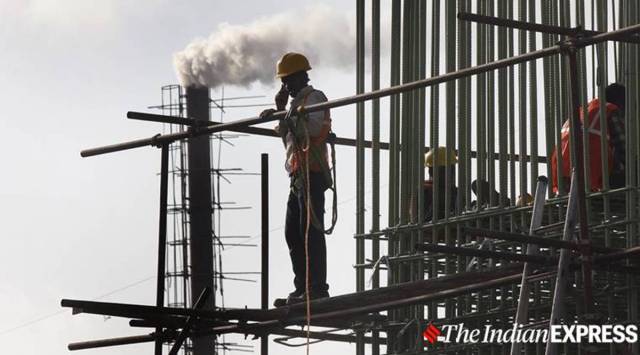After historic warm year , carbon-di-oxide levels in 2024 set new records: WMO
According to the WMO’s annual Greenhouse Gas Bulletin, CO₂ levels saw their steepest-ever increase, rising by about 3.5 parts per million (ppm) between 2023 and 2024.
 Human activity, rising industrial emissions, and the surge in wildfires were identified as major contributors to the record levels. (File)
Human activity, rising industrial emissions, and the surge in wildfires were identified as major contributors to the record levels. (File)Carbon dioxide levels in the atmosphere touched a new high in 2024, having registered a record increase from the previous year, new data released by the World Meteorological Organisation (WMO) on Wednesday revealed.
Incidentally, 2024 was recorded as the warmest year ever, with the average global temperatures being 1.55 degree Celsius over the pre-industrial levels (average of the 1850-1900 period). This was the first time that global temperatures had breached the 1.5 degree Celsius threshold. One of the key goals of the 2015 Paris Agreement is to prevent global warming from breaching this limit in order to avoid catastrophic and irreversible impacts of climate change.
The WMO Greenhouse Gas Bulletin, an annual publication, said globally averaged surface concentrations of carbon dioxide the atmosphere had increased by 3.5 parts per million from the 2023 levels to reach 423.9 ppm in 2024, a record high. The year-on-year increase of 3.5 ppm was the highest since measurements began in 1957, and significantly higher than the average of 2.4 ppm a year during the decade 2011 to 2020.
The WMO report noted that the growth rate of CO2 concentration to had tripled since the 1960s, accelerating the annual average increase of 0.8 ppm/year to 2.4ppm/year during the decade 2011 – 2020. For comparison, the CO2 concentration measured by WMO’s Global Atmosphere Watch network stations in 2004 was 377.1 ppm.
Anthropogenic activities, increased human-linked sources, rise in wildfire incidents were being underscored, yet again, as the major contributors for pushing the levels of CO2 during 2023 – 2024.
“The heat trapped by CO2 and other greenhouse gases is turbo-charging our climate and leading to more extreme weather. Reducing emissions is, therefore, essential not just for our climate but also for our economic security and community well-being,” said Ko Barrett, Deputy Secretary-General, WMO.
In addition to CO2, the WMO report said, the concentration of other greenhouse gases, too, reported an increase. Concentrations of nitrous oxide (338 parts per billion, up by 25 per cent) and methane (1942 parts per billion, up by 166 per cent) — hinted at the rate at which global warming was advancing at an accelerated rate.
The year 2024 also happened to be an El Nino year. El Nino is associated with warmer-than-normal temperatures in the equatorial Pacific Ocean and this global phenomenon influences global weather patterns, pushes up temperatures, is linked to subdued rainfall and droughts.
- 01
- 02
- 03
- 04
- 05































